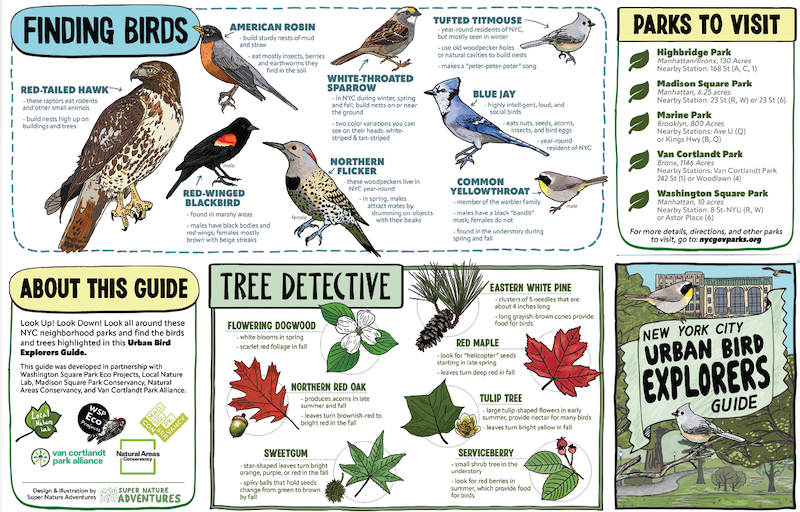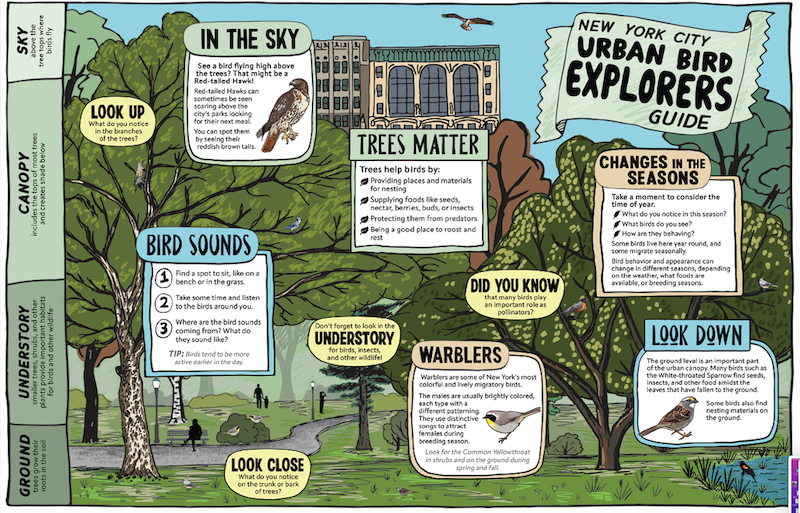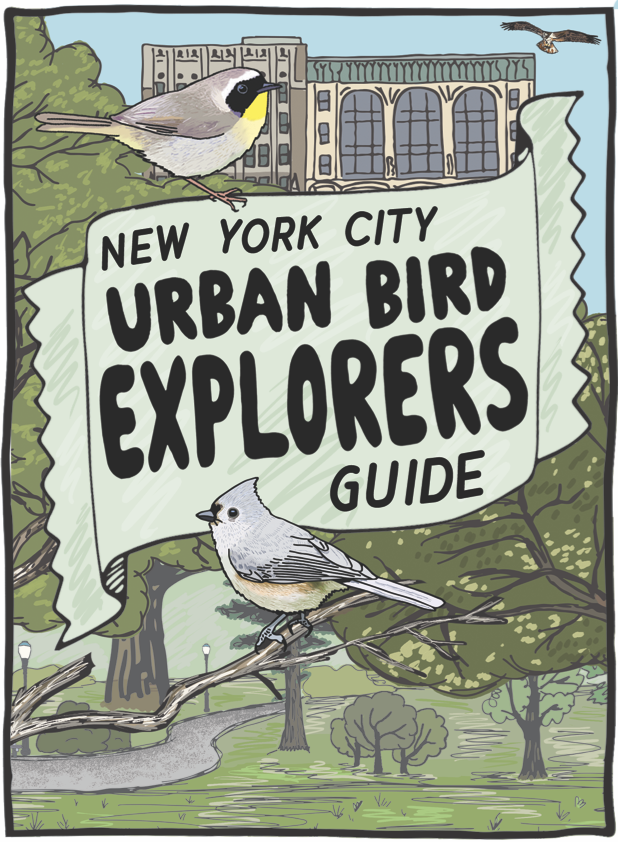BY GEORGIA SILVERA SEAMANS | Look! Up in the sky! It’s a balloon! Please, no! … It’s a red-tailed hawk!
Hawks are not the only species you will find in Washington Square and other city parks as summer draws to an end and fall begins. This summer, several NYC park-centered organizations released the “New York City Urban Bird Explorers Guide,” a pocket-sized zine, to help you notice the birds in your local park.
The guide was developed in partnerships with Local Nature Lab, Madison Square Park Conservancy, Natural Areas Conservancy, Van Cortlandt Park Alliance and Washington Square Park Eco Projects. Design and illustration services were provided by Art Nature Place (formerly Super Nature Adventures).

New York City sits within the Atlantic Flyway, one of the intercontinental migratory routes that birds take between their breeding grounds in the North and their wintering grounds in the South. You won’t just find birds in the sky. Scan a tree’s crown of leaves and fruit, peer into thick shrubs, look into masses of wildflowers, and look down for birds picking their way through seed-filled grassy areas. Don’t forget to look closely at a tree’s trunk. Birds are experts at camouflage.
The “New York City Urban Bird Explorers Guide” is also a tool to notice trees big and small in city green spaces. The “Tree Detective” panel highlights seven species: eastern white pine and tulip tree (two of the tallest trees in our Northeast forests), northern red oak (oak trees are the go-to food for 950 species of caterpillars, according to Doug Tallamy, Ph.D.), sweetgum (a star-shaped leaf like no other), red maple (most things about this tree are red), serviceberry (the fruit is coveted by many), and flowering dogwood (those white petals aren’t really petals).

Download a free copy of the “New York City Urban Bird Explorers Guide” here.
Silvera Seamans is director, Washington Square Park Eco Projects. She did a dissertation about urban forestry policy in Northern California cities. Her research has been published in the journals Urban Forestry & Urban Greening and Arboriculture & Urban Forestry. She also writes about trees in City Trees magazine and about birds in articles in Popular Science and Audubon.


Be First to Comment